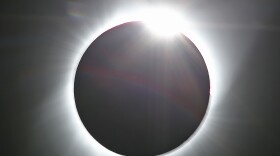-
Known as 12P/Pons-Brooks, the rarely seen comet prone to colorful outbursts could soon be viewed without a telescope or binoculars.
-
Outdoor groups and state and local officials in northern parts of the northeastern US worry that a surge of eclipse-watchers could overwhelm backcountry first responders.
-
From Texas to Maine, they're teaching people how to enjoy the spectacle safely. Some will hand out glasses or answer questions at events. Others plan to take their own advice — and get outta town.
-
In 2017, some people damaged their eyes watching partial eclipses. Eye experts say this is easily avoidable if you take the right safety steps.
-
From why you need them to how to check if they're the real deal, here's a guide to eclipse glasses so you can view this rare total solar eclipse safely.
-
Is this your first total solar eclipse, or did you have your glasses out in 2017, too? However you're celebrating, we want to hear from you.
-
On April 8, 13 states from Texas to Maine will be in the path of totality.
-
Ecommerce-watcher Pattern reports prices have increased since the last fall's solar eclipse. Back then a pair of solar eclipse glasses cost about $16, but now they're more like $20.
-
Lots of urban areas will be either in or adjacent to the path of totality for the eclipse on April 8. Experts advise getting into this path, as even a 99% partial eclipse is nothing like a total one.
-
A team of astronomers has created a device that lets people who are blind or have low vision experience a solar eclipse.
-
An Austin, Texas-to-Detroit flight along April's path of totality is sold out. There are other flights with a view, though your best bet may actually be here on Earth, says one astrophysicist.
-
On the flight from Austin, Texas, to Detroit, the airline is using a plane with bigger windows to make it easier to see the eclipse.
Play Live Radio
Next Up:
0:00
0:00
Available On Air Stations









